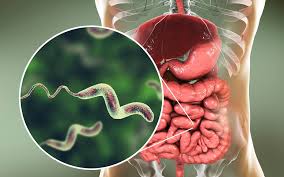A recent report from Oxford’s ‘Our World in Data’ reveals that diarrheal diseases led to approximately 1.2 million deaths in 2021, a figure that rivals the total number of violent deaths worldwide. This alarming statistic underscores the urgent need to tackle this public health crisis, particularly as diarrheal diseases remain a leading cause of mortality among children and adolescents, accounting for around 390,000 of those deaths.
Despite significant progress in reducing diarrheal disease fatalities over recent decades due to public health interventions, much work remains. The report emphasizes that while global death rates have decreased, they are still unsustainable and require immediate attention. In 2021, an estimated 340,000 children under five years old succumbed to these diseases, highlighting a critical gap in health care, particularly in low-income countries.
The leading causes of diarrheal deaths include poor sanitation, lack of clean drinking water, and limited access to adequate healthcare. The report points out that death rates from diarrheal diseases in low-income countries are nearly fifty times higher than in their high-income counterparts. These deaths are largely preventable, primarily caused by pathogens that thrive in unsanitary conditions. Effective measures such as improving sanitation facilities and ensuring access to clean drinking water can significantly mitigate the crisis.
To combat diarrheal diseases effectively, the report advocates for several interventions. These include:
- Access to Clean Water and Sanitation: Improved water quality and sanitation can significantly reduce the incidence of diarrhea. The report cites studies indicating that better sanitation can reduce the risk of infection by up to 36%, while improved water quality can lower the risk by 17%.
- Oral Rehydration Solutions (ORS): This simple mixture of water, salt, and sugar is critical in treating dehydration caused by diarrhea. Estimates suggest that if ORS coverage were increased to nearly 100%, it could prevent approximately 93% of diarrheal deaths.
- Vaccination: Vaccines, particularly against rotavirus and cholera, have been introduced and shown effective. Rotavirus vaccines can reduce severe disease incidence by up to 74%, significantly impacting childhood mortality rates.
- Community Education: Promoting practices such as handwashing with soap can lower the risk of diarrheal diseases by 48%. Additionally, educating mothers on breastfeeding can transfer essential immunity to infants, greatly reducing their vulnerability to infectious diseases.
While there has been progress, the data indicates that the situation remains critical. Addressing diarrheal diseases requires a multifaceted approach, combining sanitation improvements, vaccination programs, and community health education. The report calls for intensified efforts to ensure that all children, particularly those in low-income countries, have access to the necessary resources to combat these preventable diseases effectively.
(For further details, you can access the full report on the ‘Our World in Data’ website Our World in Data – ps://ourworldindata.org/childhood-diarrheal-diseases).




